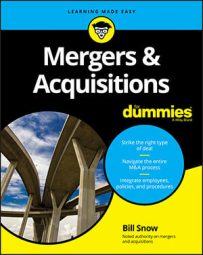Buyers in an M&A process utilize various measurements for their investments, or at least they should. A wise investor weighs the price of the investment against the expected return and then compares that expected return against other uses of that money. Simply put, the more money you pay to acquire a business, the lower the potential return. The following provides some common figures you can use as you measure returns.
Walking away is always an option. In addition to weighing several possible investments, you may decide that doing nothing is the best course of action, an option you may exercise with greater frequency as Sellers ask for higher and higher prices.
Internal rate of return (IRR)
Internal rate of return (IRR), or the percentage of return that causes the expected cash flows from an investment to be the same as the cost of the investment, is one of the favorite calculations for Buyers, particularly private equity (PE) firms. Buyers usually have a minimum target return they’re seeking, and if an investment’s expected IRR is greater than that minimum, they do the deal.
IRR is very important to PE firms because those firms raise money from investors by touting their stellar returns. Therefore, if the investments are too pricy and the resulting yields too low, a PE fund’s returns are low, and that makes raising more funds from investors difficult. Investors simply choose to invest with funds that have returned higher rates of return.
For a strategic Buyer (a company looking to acquire another company for synergistic reasons), the same principle applies. If a deal is too costly, the strategic Buyer doesn’t do the deal. The firm looks at its other options, which may include buying a different company, investing those funds in its own company, or doing nothing. A firm may decide investing some money in the market is a safer bet than the company purchase.
Return on investment (ROI)
Return on investment (ROI) is another favorite calculation of Buyers. You calculate ROI by dividing the company’s earnings by the Buyer’s purchase price. In other words, a company that generates $10 million in earnings and cost the Buyer $50 million has a 20 percent ROI.

